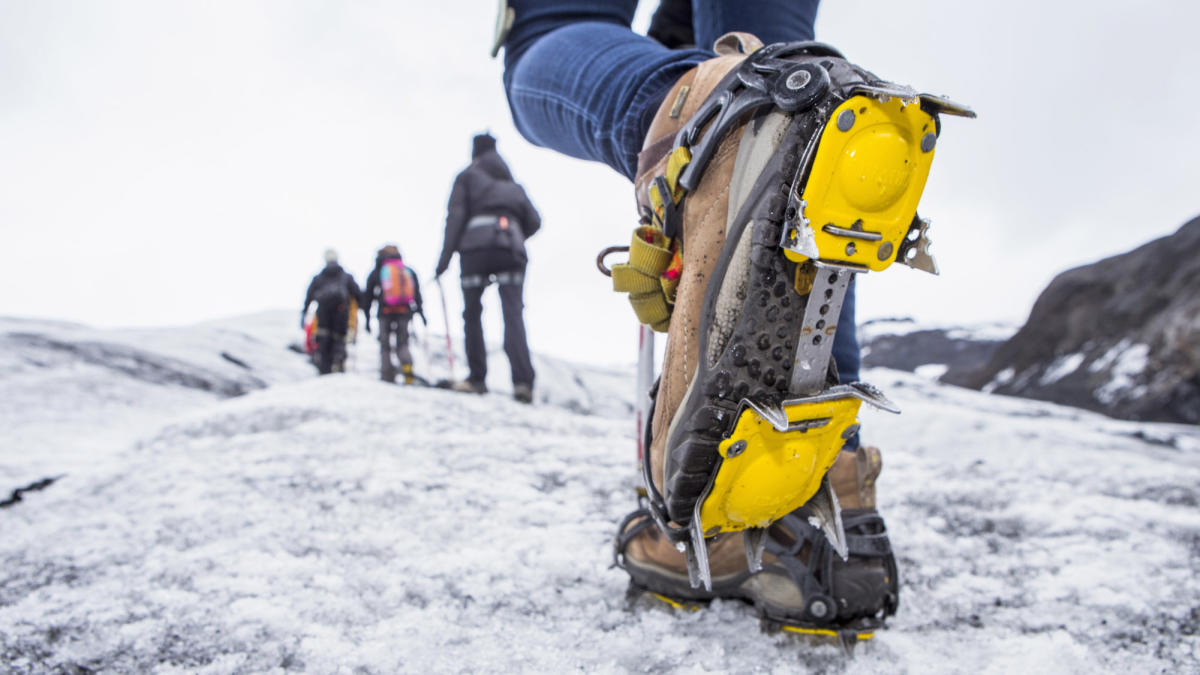The oncoming cold weather probably won’t stop you from hiking or running this fall and winter, but it does change the way you approach your outdoor activities. In some places this might just mean wearing a light running jacket or throwing on a fleece jacket for hiking, but you might have to deal with very slippery surfaces if you live somewhere with a lot of snow and ice. . Whether it’s just for a few weeks during the January cold snap or you’re expecting a six-month snow season, shoe traction devices provide excellent fall protection and can keep you moving up to the arrival of spring.
There are three main types of shoe traction devices that each serve different purposes. Some are better for packed snow, others for ice, and each type is better for some activities than others. A quick look at the three main types of shoe traction devices will help you easily determine what you need to keep training and enjoying the outdoors during the cold season.
1. Coiled traction devices

Coiled traction devices are simple handles made from elastic rubber uppers with steel coils on the bottom that you slip over your hiking boots or trail running shoes and secure with a Velcro strap. The coils provide traction when walking or running on packed snow and ice.
The most popular brand of wrap devices is Yaktrax, named after the Tibetan yak, and they advertise that you can wear them in temperatures as low as -40C/-41F. Wrap around traction devices are quite affordable and work with any running or hiking shoe you might use. They work best on snowy and muddy roads as well as in variable conditions where you might be traveling in paved areas. You can wear rolled devices for hiking and running, and there are now activity-focused models, such as the Yaktrax Run Winter Traction Device.
Wrapped devices aren’t so great for really slippery and icy conditions, where they just tend to slide on top, and they don’t work well on steep inclines. Another downside is that they tend to break quite easily. But for winter road running and gentle hiking over packed snow and slush, you’ll be happy with a pair of these and they won’t affect your gait too much.
2. Spiked traction devices

Spike traction devices look a bit like their coiled counterparts, with a thermoplastic rubber shank that slips over your shoes, but down below they feature stainless steel chains and spikes to bite into the dirt more aggressively. ice. Like the coiled devices, the spikes will work on both your hiking and running shoes.
Spiked traction devices tend to be a bit more expensive than coiled devices, but they are also more durable. These devices work great for hiking and running on ice as well as packed snow, but most of them aren’t useful for running on tarmac, so if you’re road running, you’ll be happier with coiled devices that you do not. we must continue to take off. Spiked traction devices such as Kahtoola Microtips are great for icy winter trail running and hill hiking, although it has to be said that running in spikes can take a bit of getting used to, and it tends to slow you down a bit. However, if you like running, it’s probably better than not running at all.
There are definitely some areas where you can use coils and spikes quite interchangeably, like the popular trails in Colorado where the snow tends to be dry and tightly packed, but as you can see there are slight differences in their uses and neither. help somewhere with very mixed winter conditions, like Scotland. Learn more in our article on Yaktrax vs Microspikes.
3. Crampons

Finally, you have cleats, which are a serious step up from coiled or spiked devices. The cleats are a bit like spikes on steroids, with a sturdy metal frame that fits over your winter hiking boots and sturdy metal spikes. Unlike either of the other two devices, the cleats do not work with running shoes and are not intended for running. Many runners will describe running with cleats, but they actually mean spikes.
The best crampons are for mountaineering, mountaineering, and ice climbing, and they’ll cost you as much as a pair of hiking boots, so if you’re not planning on doing any of those activities , you do not need to own a pair of crampons. Also, if you are undertaking a unique winter expedition, you may be able to rent a pair.

